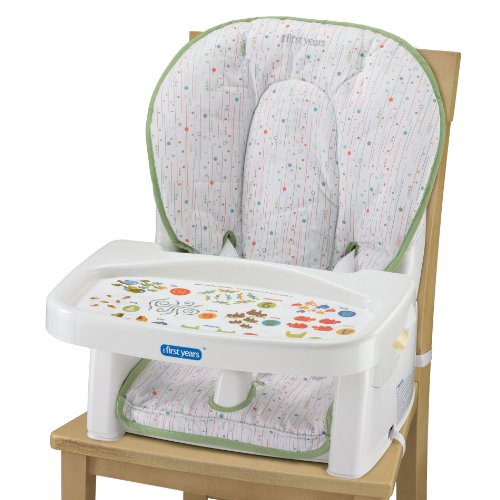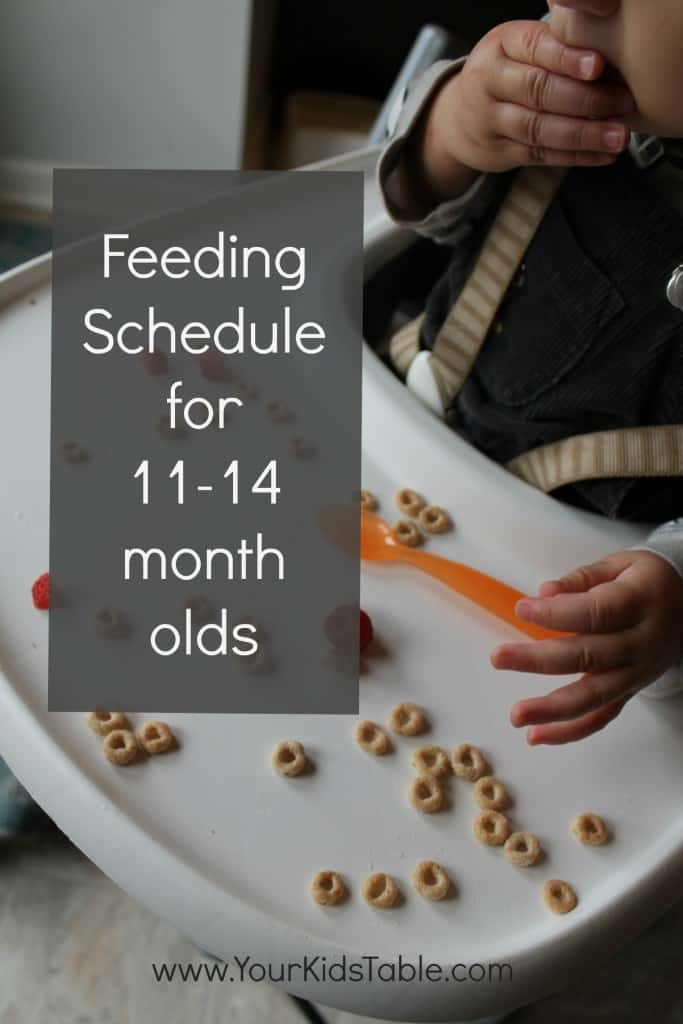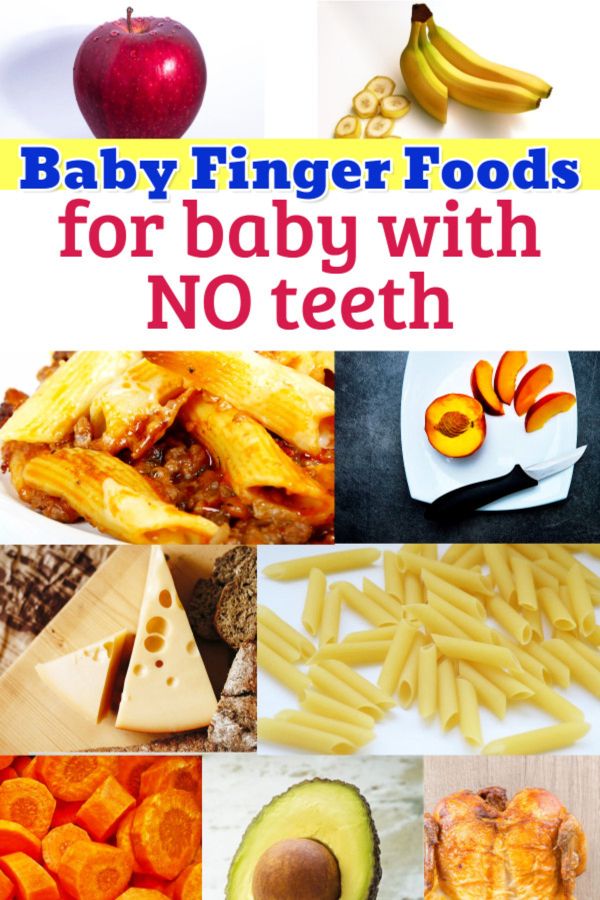Baby feeding first year
Feeding your baby in the first year
Feeding your baby in the first year of life is an exciting adventure for parents and babies alike. It’s about development, nutrition, curiosity, sharing and learning. Attachment also grows as you go about your daily routine with your baby.
You can help your baby develop a lifetime of healthy eating habits with the right start.
The first 6 months
For the first 6 months of life, breastfed babies will get what they need from their mother’s milk.
- Babies who are exclusively or partially breastfed should get a daily supplement of vitamin D, which is available as drops.
- Breast milk has the right amount and quality of nutrients to suit your baby’s first food needs.
- Breast milk also contains antibodies and other immune factors that help your baby prevent and fight off illness.
If breastfeeding is not an option, use a store-bought iron-fortified infant formula for the first 9 to 12 months.
- Formula should be cow milk-based.
- Homemade formulas made from canned, evaporated, whole milk (cow or goat), or any plant-based beverage, are not recommended as a breast milk substitute.
- Homemade formulas can contain harmful germs and lack important nutrients that can make your baby sick.
- Rice, soy, almond or other plant-based beverages, even when fortified, are not appropriate as a breastmilk substitute as they are nutritionally incomplete for infants. There is no evidence that soy-based formula will prevent your child from developing an allergy.
- Soy-based infant formulas should only be used as an alternative to cow milk-based formula if your baby has galactosemia (a rare disorder that will affect how your baby’s body processes simple sugar) or if your baby cannot consume dairy-based products for cultural or religious reasons.
- Talk to your doctor if you are unsure which formula is best for your child.
If your baby has allergies, or if allergies run in the family, see below for specific recommendations about when and how to introduce allergenic foods (such as eggs or peanuts).
Introducing solid foods
At about 6 months, most babies are ready for solid foods. Along with other foods, you can continue to breastfeed as long as it is comfortable for you and your baby, even well into the toddler years.
You’ll know baby is ready to start other foods when they:
- Can sit up without support, lean forward, and have good control of their neck muscles.
- Ability to pick up food and try to put it in their mouth.
- Hold food in their mouth without pushing it out with their tongue right away.
- Show interest in food when others are eating.
- Open their mouth when they see food coming their way.
- Can let you know they don’t want food by leaning back or turning their head away.
Remember that all babies are different. Some babies may be ready a few weeks before or just after 6 months. However, waiting after 6 months to introduce other foods increases your baby’s risk of iron deficiency.
What foods should we start introducing our baby to first?
There are many ways to introduce solid food. The first foods usually vary from culture to culture and from family to family.
The first foods usually vary from culture to culture and from family to family.
Start with foods that contain iron, which babies need for many different aspects of their development. Meat, poultry, cooked whole egg, fish, tofu, and well-cooked legumes (beans, peas, lentils) are good sources of iron. Store-bought iron-fortified infant cereals such as oat, wheat, barley or rice are also common first foods because they are good sources of iron. Offer iron-rich foods at least twice per day.
Healthy foods that your whole family is eating are the best choice for your baby. You can use commercial baby foods, but read the label to ensure there is no added salt or sugar. A variety of textures (such as lumpy, tender-cooked and finely minced, puréed, mashed or ground), and soft finger foods are recommended. As baby gets older, offer foods with more texture.
| First foods - Around 6 months | |
|---|---|
| Iron-rich foods | Puréed, minced, diced or cooked meat, fish, chicken, tofu, mashed beans, peas or lentils, eggs, iron-fortified infant cereal. |
| After 6 months | |
| Grain products | Iron-fortified infant cereal, small pieces of dry toast, small plain cereals, whole grain bread pieces, rice and small-sized pasta. |
| Vegetables | Puréed, mashed, lumpy or pieces of soft cooked vegetables. |
| Fruit | Puréed, mashed or lumpy soft fruit. Pieces of very ripe soft fresh fruit, peeled, seeded and diced or canned fruit (not packed with syrup). |
| Milk products | Dairy foods like full-fat yogurt, full-fat grated or cubed pasteurized cheeses, cottage cheese. |
| 9 to 12 months | |
| Milk | Whole cow’s milk (3.25%) can be introduced if breastmilk is no longer available, between 9-12 months. After 12 months of age, your baby should not take more than 25 ounces (750 mL) of milk per day. |
Introducing common food allergens
You can start to introduce common allergenic foods—like peanut products or eggs—when you are starting your baby on other solid foods, usually around 6 months of age.
However, if your baby is at high risk of developing an allergy (has allergies such as eczema, or a parent or sibling with an allergic condition) you can start after baby is 4 months old, but not sooner. Talk to your doctor if you are unsure.
Waiting until after 6 months to try to prevent an allergy is not recommended.
- When introducing foods that are common food allergens, it’s best to offer no more than one new food per day. You may want to wait a day or two before you introduce another. This makes it easier to identify a food that may have caused a reaction.
- If your baby is tolerating the allergenic food, continue offering it a few times a week to maintain tolerance.
 If an allergic reaction occurs, contact your doctor.
If an allergic reaction occurs, contact your doctor. - Make sure these new foods are smooth and small enough so that your baby isn’t at risk of choking. When introducing peanut products to young infants, try mixing a bit of peanut butter with some water, breast milk, or a puréed fruit or vegetable that your baby has had before. For older infants, spread a bit of smooth peanut butter on a piece of thin toast crust or offer a peanut puff product.
How much should I feed my baby?
Follow your baby’s cues for how much to feed. Start by offering a teaspoon or two. Don’t rush. Some babies need to try a food many times before accepting it. If she’s not hungry, she’ll turn her head and close her mouth. If she’s hungry, she’ll get excited and open up.
Never trick or coax her to eat more by playing games or offering sweetened foods. Babies who are allowed to follow their own hunger cues are much less likely to overeat later in life.
Try foods with different tastes and textures to help your baby learn how to handle foods in her mouth.
Water and juice
Babies who are exclusively breastfed don’t need extra water. When your baby begins to eat other foods, you can start to offer water occasionally, in an open cup.
- Babies and children don’t need to drink juice. Too much juice can cause diarrhea and can fill up small stomachs, decreasing your baby’s appetite for nutritious foods. Too much juice can also cause early childhood tooth decay.
- Offer water to babies and young children between meals and snacks if they are thirsty. If you choose to offer juice, be sure it is only 100% fruit juice (with no added sugar). Limit juice to 125 mL (4 oz.) per day.
Are there any foods my baby shouldn’t eat?
- Babies shouldn’t be offered sugary drinks or foods, such as candies, soda/pop or energy drinks.
- Don’t give honey to babies under a year old, as there is a risk of infant botulism (food poisoning).
- If you have concerns, please speak to your health care provider.

Is there anything else I should know about feeding my baby?
- Always wash your hands before preparing your baby’s food, and wash your baby’s hands before they eat.
- Wipe your baby’s gums with a soft, damp cloth twice a day for good oral health.
How can I prevent choking?
Young children don’t know how to chew food into tiny pieces. And they haven’t learned how to bring a piece of food back up when it gets caught going down. Foods most likely to cause choking are small, round or cylindrical in shape, like hot dogs, whole grapes, carrot slices, seeds and hard candy.
To protect your baby:
- Always supervise them while they are eating.
- Make sure your baby is sitting down to eat.
- Grate raw vegetables such as carrots to make them easier to chew.
- Cook hard fruits and vegetables to soften them.
- Slice round foods such as hot dogs or grapes lengthwise.
- Remove pits from fruits.
- Chop or scrape stringy meat and add broth to moisten it.

- Spread sticky foods like nut butters thinly on a cracker or toast rather than bread.
- Don’t feed your baby whole nuts, raisins, popcorn, gummy candies, hard candy, or fish with bones.
Developmental milestones related to feeding
| Age | Physical milestones | Social milestones |
|---|---|---|
| Birth to 4 months |
|
|
| 4 to 6 months |
|
|
| 6 to 9 months |
|
|
| 9 to 12 months |
|
|
| 12 to 18 months |
|
|
| 18 to 24 months |
|
|
More information from the CPS
Additional resources
Reviewed by the following CPS committees
- Allergy Section
- Nutrition and Gastroenterology Committee
- Public Education Advisory Committee
Last updated: January 2020
Feeding Guide for the First Year
Feeding Guide for the First Year | Johns Hopkins MedicineReviewed By:
Tiffani Hays, M. S., R.D., L.N., Director of the Pediatric Clinical Nutrition Education & Practice
S., R.D., L.N., Director of the Pediatric Clinical Nutrition Education & Practice
Making appropriate food choices for your baby during the first year of life is very important. More growth occurs during the first year than at any other time. It’s important to feed your baby a variety of healthy foods at the proper time. Starting good eating habits at this early stage will help set healthy eating patterns for life.
Recommended Feeding Guide for the First Year
Breast milk and formula are designed to be the primary sources of nutrition throughout an infant’s first year of life. You should talk with your baby’s health care provider before starting solid foods. Solid foods should not begin before age 4 months because:
- Breast milk or formula provide your baby with all the nutrients that are needed.
- Your baby isn’t physically developed enough to eat solid food from a spoon.
- Feeding your baby solid food too early may result in poor feeding experiences and increased weight gain in both infancy and early childhood.

The American Academy of Pediatrics (AAP) recommends that all infants, children and adolescents take in enough vitamin D through supplements, formula or cow’s milk to prevent complications from deficiency of this vitamin. In November 2008, the AAP updated its recommendations for daily intake of vitamin D for infants, children, and adolescents who are healthy. It is now recommended that the minimum intake of vitamin D for these groups should be 400 IU per day, beginning soon after birth. Your baby’s health care provider can recommend the proper type and amount of vitamin D supplement.
Guide for Breast-feeding (Zero to 12 Months)
- In the early days after a baby’s birth, the mother should plan to breast-feed every two to three hours, including overnight. The mother should respond to the infant’s cues of hunger in a prompt and relaxed manner, providing a quiet and comfortable environment for both herself and the baby. Frustrated or distracted infants may have difficulties latching on.

- It is normal for infants to wake up overnight to feed for the first several months. If you have any concerns about overnight feeding, please discuss them with your health care provider.
- Alternate breasts to feed on, and allow the infant to completely empty the breast before switching to the other. This practice ensures the infant receives hindmilk, which is richer in nutrients.
- Follow your child’s feeding cues and resist forcing a schedule. Instead, rely on keeping track of wet diapers and your child’s growth to judge whether he or she is receiving enough breast milk. A mother’s milk changes as the infant grows, and feeding habits change as well in order to best meet a child’s needs. If you have any questions about whether your child is receiving enough breast milk, ask your health care provider.
- When not able to breast-feed, use a breast pump to extract milk and maintain milk supply.
 Pumped breast milk should be stored safely, using appropriate temperature guidelines. Pumped breast milk may be offered to infants in bottles, while responding to the same feeding cues to determine how much they take. Forcing bottles to be emptied may result in overfeeding and excess weight gain, even when feeding breast milk.
Pumped breast milk should be stored safely, using appropriate temperature guidelines. Pumped breast milk may be offered to infants in bottles, while responding to the same feeding cues to determine how much they take. Forcing bottles to be emptied may result in overfeeding and excess weight gain, even when feeding breast milk. - With the proper support, a mother can meet the needs of most infants, even twins, so seek out help from your health care provider or lactation consultant for success.
Guide for Formula Feeding (Zero to 12 Months)
- When breast milk is not available, standard infant formula is an appropriate alternative for most healthy full term infants, but there are some differences between brands. Do not hesitate to ask your health care provider for a recommendation if you are unsure which formula to use.
- Bottle-feeding should be interactive, with the caregiver holding both the bottle and the infant.
 Propping a bottle has been linked to an increased risk of ear infections and tooth decay.
Propping a bottle has been linked to an increased risk of ear infections and tooth decay. - Formula feeding should be in response to the infant’s needs and not based on a predetermined schedule. Look for cues of hunger and fullness to determine both when to feed and how much. The number of wet diapers per day and your child’s growth will reflect if he or she is getting enough formula. The chart below demonstrates common intakes for infants at various stages. However, ask your health care provider if you have any questions about how much formula your infant is taking.
- The amount of formula an infant takes will decrease as the baby increases intake of solid foods, but formula remains a significant source of calories, protein, calcium and vitamin D for the first year of life.
- Ask your health care provider before switching an infant less than 1 year of age from formula to cow’s milk or a cow’s milk alternative.

| Age | Amount of formula per feeding | Number of feedings per 24 hours |
|---|---|---|
| 1 month | 2 to 4 ounces | six to eight |
| 2 months | 5 to 6 ounces | five to six |
| 3 to 5 months | 6 to 7 ounces | five to six |
Complementary Feedings (After 6 Months of Age)
Beverages
- Offer only breast milk or formula in bottles until 1 year of age unless specifically advised by your health care provider.
- Begin offering breast milk and/or formula in a cup starting at 6 months of age.
 Infants should drink breast milk and/or formula for the first year of life.
Infants should drink breast milk and/or formula for the first year of life. - Fruit juice is not recommended under 1 year of age.
- When introducing juice, offer 100% pasteurized juice and limit it to 4–6 ounces per day. Do NOT place juice in a bottle.
- Avoid giving any sugar-sweetened beverages to infants.
Solid Foods
- Introduce solid foods when your infant is ready, at around 6 months of age depending on the infant’s development. Infants are ready to start eating solid foods when they can:
- sit up on their own or with a little support
- reach for and put things in their mouth
- open their mouth when seeing something coming
- keep food in their mouth rather than pushing it out onto the chin
- move food to the back of their mouth with their tongue
- turn their head away when they do not want something
- Prepare to introduce solid foods in a calm feeding environment where the infant is sitting upright and is appropriately supported and moderately hungry.

- Start with small amounts of solid food, feeding with a spoon or allowing finger feeding, then gradually increase the amount as the infant eats more and develops. Avoid offering breast milk or formula until after the solid-food experience has wound down.
- Expose infants to a wide variety of flavors and textures of healthy food. Don’t limit your baby’s food choices to the ones you like. Offering a range of foods early will pave the way for healthy eating habits.
- Maintain the division of responsibility when feeding.
- The caregiver is responsible for what to eat (offering appropriate variety and textures).
- The child is responsible for deciding whether to eat and how much.
- Avoid adding salt or sugar to make baby foods more appealing. Many babies and toddlers need to experience a new food multiple times before accepting it, and increased intakes of salt and sugar among children are associated with obesity in adults.

- Observe infants for any signs of intolerance when introducing a new food or texture, and discuss all concerns with your health care provider.
- Although convenient and safe, commercial baby foods are not required. Young children are more likely to eat foods they see others eating, so as long as they are observed to see how they handle new food in their mouths, baby-led weaning using table foods is an appropriate way to introduce solids.
- Avoid honey in any form during your child’s first year, as it can cause infant botulism. Address any concerns about developing food allergies with your health care provider.
- Don’t restrict fat and cholesterol in the diets of very young children, unless advised by your child’s health care provider. Children need calories, fat and cholesterol for the development of their brains and nervous systems, and for general growth.
Updated on July 26, 2019.
Related
-
Nutrition
Toddler Nutrition
-
Breastfeeding Your Baby
Breastfeeding 101: Q&A with Lactation Expert Nadine Rosenblum
-
Developmental Milestones: Babies and Toddlers
Well-Care Visits
Related Topics
Feeding children in their first year of life
January 29, 2019
Breastfeeding
Natural feeding is a type of feeding when a child receives women's milk for the first 4-4.5 months in full daily volume or its share is at least 80%. Rational nutrition plays a paramount role in ensuring the harmonious growth and development of the child's body, maintaining the health of the child, resistance to infections and other adverse external factors. Breast milk is fresh, natural, available at any time of the day, sterile and at the right temperature food for the baby. It has an optimal and balanced composition, high digestibility, a wide range of biologically active substances, which even the most perfect milk mixtures do not have. nine0003
Rational nutrition plays a paramount role in ensuring the harmonious growth and development of the child's body, maintaining the health of the child, resistance to infections and other adverse external factors. Breast milk is fresh, natural, available at any time of the day, sterile and at the right temperature food for the baby. It has an optimal and balanced composition, high digestibility, a wide range of biologically active substances, which even the most perfect milk mixtures do not have. nine0003
In addition, psycho-emotional contact between mother and child during feeding has a beneficial effect on the formation of behavioral reactions in the child in the future and affects his intellectual development. In this regard, women's milk can be considered as the "gold standard", the only indispensable product created by nature itself for feeding children in the first year of life.
Several methods are used to calculate food volume:
Breast milk is the most optimal for feeding children in the first 4-5 months of life, but it cannot provide the growing body with the necessary vitamins and minerals. Therefore, as the child grows older, it is necessary to correct nutrition by introducing juices, vegetable and fruit purees into the child's diet. This is the basis for its proper development, prevention of rickets, iron deficiency conditions, dysfunction of the digestive tract. With natural feeding, juices should be introduced from 3.5-4 months. Earlier introduction of juices from 1.5-2 months is not advisable, as it can lead to disruption of digestion processes, allergization of the body. Juices are prescribed between feedings, starting with 2-5 drops, gradually increasing the daily dose. Juices are not included in the total amount of food and are not taken into account. 2 weeks after the introduction of juices into the diet of a child at the age of 4-4.5 months, puree from apples, apricots and other fruits is introduced. Over time, breast milk ceases to satisfy the needs of a growing body and, in addition, training of the developing digestive system, chewing apparatus and stimulation of intestinal motor activity is necessary.
 For this purpose, complementary foods are introduced at the age of 4-5 months. Complementary foods are dishes that gradually replace women's milk, accustom the child to adult food. It is introduced with a spoon, starting with small volumes (1/2 teaspoon), supplementing the missing volume of breast milk. Gradually, over several days, bring the volume to full feeding. nine0003
For this purpose, complementary foods are introduced at the age of 4-5 months. Complementary foods are dishes that gradually replace women's milk, accustom the child to adult food. It is introduced with a spoon, starting with small volumes (1/2 teaspoon), supplementing the missing volume of breast milk. Gradually, over several days, bring the volume to full feeding. nine0003
First food - vegetable puree. The introduction of vegetable complementary foods should begin with one type of vegetable (potatoes soaked for 10-12 hours, cabbage, zucchini, etc.). This will allow, in the event of a food allergy, to identify the allergen as soon as possible and eliminate it from the diet. At least 2 weeks are allotted for each new taste. Gradually, the assortment of vegetables increases, it is possible to prepare vegetable mixtures containing various types of vegetables. Tomatoes, green peas, pumpkin are introduced later. nine0003
The second food is introduced only after replacing one meal with vegetable food. Gluten-free cereals (rice, buckwheat, corn flour) are used as the 2nd complementary food. The first 1-2 weeks complementary foods are introduced in the form of 5% porridge, after 1-2 weeks - 10% porridge. If the child is not gaining weight well or there is a tendency to unstable stools, it is advisable to introduce porridge into the diet first, and then vegetable puree. From 6-7 months, you can enter into the diet the yolk of a hard-boiled egg, with ¼ part and mashed with breast milk, 2-3 times a week. From 7-8 months it is recommended to introduce cottage cheese from a dose of 5-10 g before the main feeding. By the year, the dose of cottage cheese is 50 g. Meat in the form of meat puree is introduced from 7 months. In the future, it is replaced by meatballs (8-9months) and steam cutlets (10-12 months).
Gluten-free cereals (rice, buckwheat, corn flour) are used as the 2nd complementary food. The first 1-2 weeks complementary foods are introduced in the form of 5% porridge, after 1-2 weeks - 10% porridge. If the child is not gaining weight well or there is a tendency to unstable stools, it is advisable to introduce porridge into the diet first, and then vegetable puree. From 6-7 months, you can enter into the diet the yolk of a hard-boiled egg, with ¼ part and mashed with breast milk, 2-3 times a week. From 7-8 months it is recommended to introduce cottage cheese from a dose of 5-10 g before the main feeding. By the year, the dose of cottage cheese is 50 g. Meat in the form of meat puree is introduced from 7 months. In the future, it is replaced by meatballs (8-9months) and steam cutlets (10-12 months).
From 7.5-8 months, the third complementary food begins to be introduced in the form of fermented milk products. Dairy products based on cow's milk with a low protein content and an optimal set of fatty acids, minerals and vitamins can also be prescribed. From 8-9 months, instead of a meat dish, fish is given 1-2 times a week. You can give bread, white crackers, cookies, they are pre-soaked in one of the types of complementary foods. From 10-12 months, grated cheese is introduced. Vegetable oil is introduced already in the first feeding, starting from 1/2-1/3 teaspoon to 1 teaspoon by 12 months. Butter is introduced only from 6 months. nine0003
From 8-9 months, instead of a meat dish, fish is given 1-2 times a week. You can give bread, white crackers, cookies, they are pre-soaked in one of the types of complementary foods. From 10-12 months, grated cheese is introduced. Vegetable oil is introduced already in the first feeding, starting from 1/2-1/3 teaspoon to 1 teaspoon by 12 months. Butter is introduced only from 6 months. nine0003
At about one year old, the baby begins to wean. If, upon reaching the age of a child, a woman continues to lactate and there is a mutual desire to continue breastfeeding, provided that it is combined with complementary foods adequate for age, then this should not be resisted. In this case, the child himself will refuse the breast. However, breastfeeding for more than 3 years cannot be considered justified, as it interferes with the normal development of the child's personality.
Harmonious development of the child, good emotional state, timely teething, timely formation of physical activity, good immunity, correct formation of the skeleton are signs indicating adequate age and good nutrition. nine0041
nine0041
Information prepared by dietary nurse E.A. Lapteva
Share on social networks:
Current news
Good or evil?
15.11.22
Read more
Another joy!
09.11.22
Read more
One world for all!
04.11.22
Read more
On the way to happiness
03.11.22
Read more
Project "Transfiguration"
28.10.22
Read more
Teen and law 9000
.10.22 9005 Previous Track.
Sitemap
State autonomous professional
educational institution nine0041 Republic of Bashkortostan
"Salavat Medical College"
453261 Republic of Bashkortostan
Salavat, st. Furmanova, 4
Phone/fax: (3476)-38-78-83
e-mail: slv. [email protected]
[email protected]
- College information
- Basic information
- Structure and governing bodies of the college nine0122 Documents
- Education
- Educational standards and requirements
- Manual. Teaching staff
- Logistics and equipment of the educational process
- Scholarships and other types of financial support
- Paid educational services
- Financial and economic activities
- Vacancies for reception (transfer)
- Personal data processing
- Anti-corruption nine0122 Legal basis for combating extremism and terrorism
- Vacancies
- Information security
- Olympics
- Mentoring
- Accessible environment nine0122 International cooperation
- Applicant
- Control figures for the reception of citizens
- Admission Rules
- Individual Achievement Regulation
- Local regulations
- List of specialties
- Document acceptance schedule
- Terms of admission under contracts for the provision of paid educational services
- Information on the need for applicants to undergo a mandatory preliminary medical examination (examination)
- Exemplary entrance tests
- Features of conducting entrance examinations for the disabled and persons with disabilities
- Information about the possibility of filing documents by mail
- Submission of documents by e-mail nine0122 List and deadlines for submission of documents
- Fundamentals
- Regulations
- Culture and sports
- Dormitory
- Student Council nine0122 Life safety
- Reference
- Educational work
- Additional education
- Republican information and training pedagogical seminars
- Hotline
- Feedback
- Contacts of controlling organizations
This page does not exist.

 Otherwise, they will fill up and won’t want to eat solid foods. Too much milk can also lead to iron deficiency anemia.
Otherwise, they will fill up and won’t want to eat solid foods. Too much milk can also lead to iron deficiency anemia.









